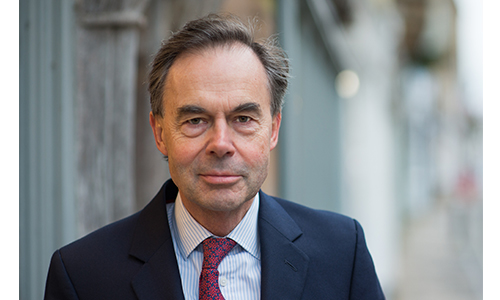Church House Joint Chief Investment Officer, James Mahon talks inflation, interest rates and an unwelcome surprise.
The drama of a banking crisis emanating from the West Coast of America and spreading rapidly to Switzerland was not on most people’s list of concerns for early 2023. We all knew that the rapid increases in base interest rates over the past year was going to lead to problems, the US Federal Reserve was quite open about being willing to inflict some pain. But the realisation that, while the effects of central bank tightening can take time to work through the system, a bank run can happen in the twinkling of a social media post came as a shock to many.
In the event, it appears that the ‘banking crisis’ has been contained quite quickly, though there will be an extended witch hunt yet and refreshed bank regulation. Credit Suisse collapsed into the arms of UBS Group, at considerable cost to the Swiss’ reputation for probity. The demise of Credit Suisse had been brewing for quite a while after multiple management problems and unfortunate ‘trip-ups’, so this was not a great surprise.
Meanwhile, the Bank of England, along with the US and European central banks, have spent the quarter pushing base rates up further in the hope of quelling inflation. The US base rate has now reached 5%, a far cry from the one-quarter of one per cent last March and back to a level not seen since 2007 (just before all those banks were tipped over the edge and the Global Financial Crisis broke).
The sheer pace of recent events at banks has, in itself, provided a further shock to the system and, undoubtedly, acts to tighten credit conditions further. The question now is whether this persuades the central banks to stop or to pause their rate increases while these effects unfold. Interest rates on UK Gilts and US Treasuries out to two years hence are lower than their equivalent base rates, indicating that we are close to the peak for base rates now. I hope that is correct as I have a lingering fear that ‘monetary tightening’ might be moving too fast.
Of course, this does all depend on the wretched inflation behaving as it is supposed to do and coming back down again. This is beginning to happen in America, where the headline rate is now down to 5% from a peak of 9% last June, and in Europe, where the rate is at 6.9% down from 10.6% in October. Sadly, the same is not yet true in the UK where our inflation is still running at over 10%.
Equity and fixed interest markets have been caught between the cheer of subsiding US inflation (and the hope that brings for ‘peak’ interest rates) and a thoroughly rattled banking sector, where share prices have been hard hit. Volatility has, once again, been the principal beneficiary of this first quarter, but overall portfolio returns are looking a shade brighter than last December.
The full Quarterly Review is available here.
April 2023
Important Information
The contents of this article are for information purposes only and do not constitute advice or a personal recommendation. Investors are advised to seek professional advice before entering into any investment arrangements.
Please also note the value of investments and the income you get from them may fall as well as rise and there is no certainty that you will get back the amount of your original investment. You should also be aware that past performance may not be a reliable guide to future performance.
How would you like to share this?

